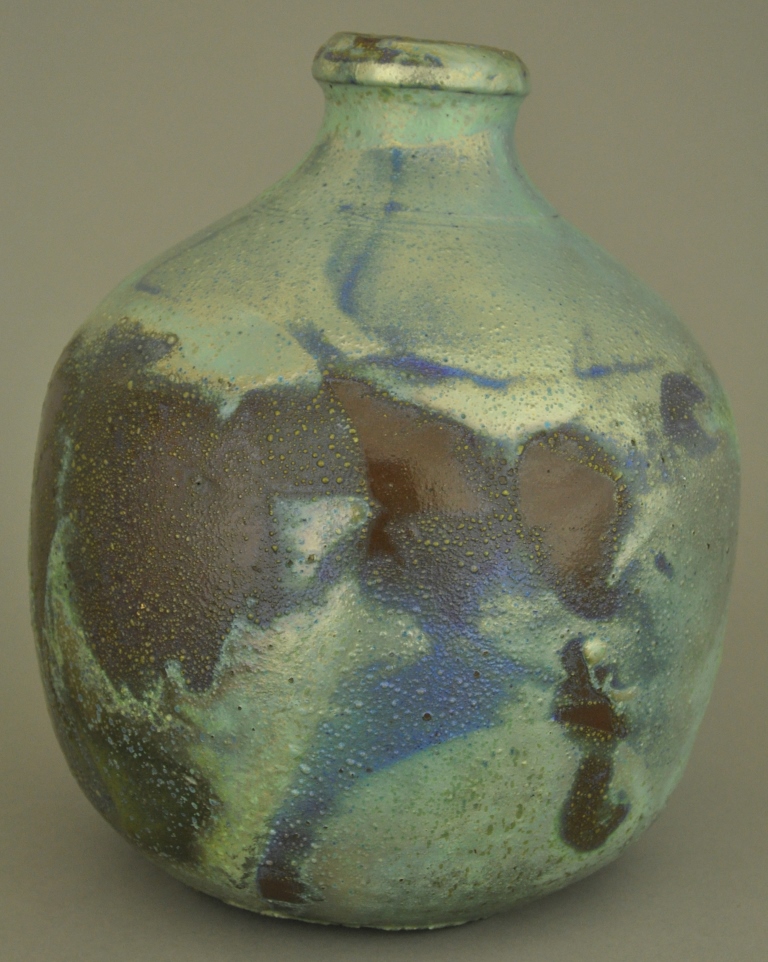 This Pewabic mosaic is installed above the altar of the crypt church within the National Shrine of the Immaculate Conception.
This Pewabic mosaic is installed above the altar of the crypt church within the National Shrine of the Immaculate Conception.
From now until January 12, 2014, the Detroit Historical Museum’s Community Gallery is host to the exhibit, “Made by Hand: Detroit’s Ceramic Legacy,” highlighting Pewabic Pottery. Pewabic was founded in 1903 by Mary Chase Perry Stratton and her partner, Horace Caulkins. Stratton had a long history in ceramics having begun working in the medium as a teenager, before going on to study at the Art School of the Detroit Museum of Art and the Cincinnati Art Academy, as a china painter. Caulkins however found himself in the fine arts world after inventing a kiln known as the Revelation originally intended to fire dental porcelain. Due to the Revelation Kiln’s reliance on kerosene, it was able to fire pottery at precise temperatures without producing sulfur and other contaminants that would discolor enamels. These benefits attracted artisans to the kiln, including Stratton.
Abandoning traditional painted china, the pair began experimenting with new kiln designs which enabled the use of new glazing techniques, culminating in the development of Pewabic’s signature iridescent glazes. Now this glaze can be seen all over metro Detroit, from the walls of several People Mover stations, churches such as Most Holy Redeemer, and building facades including those of the Guardian Building, and the National Theatre. Pewabic’s tiles have also received wider acclaim, and have been used to decorate Chicago’s Shedd Aquarium, and the crypt of the National Shrine of the Immaculate Conception in Washington D.C.
